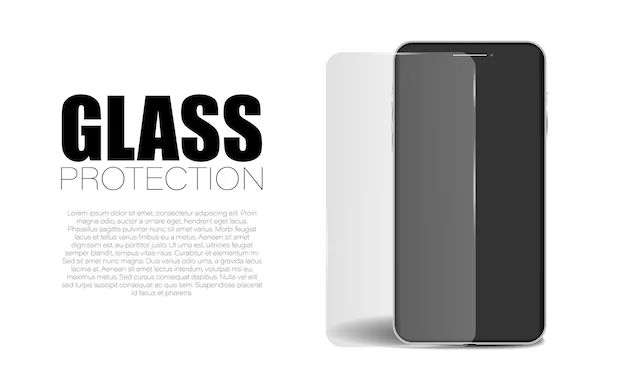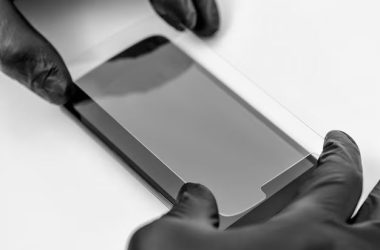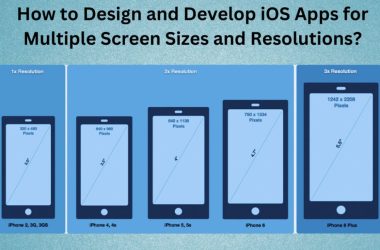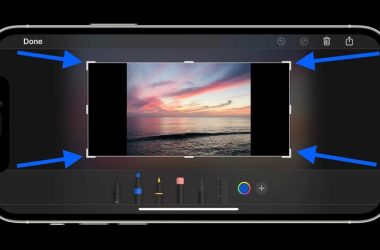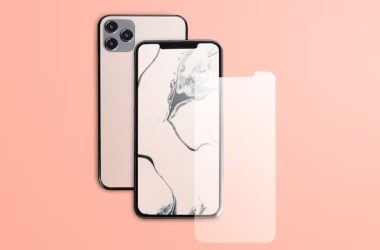Screen protectors have become an essential accessory for smartphone users looking to protect the display from scratches, cracks, and shattering. With smartphone screen protector sales projected to reach $93 billion by 2032, it’s clear these affordable products provide peace of mind to millions of device owners. Screen protectors allow you to use your phone without worry, safeguarding the screen from keys in your pocket, debris in handbags, drops on hard surfaces, and everyday wear and tear. This comprehensive guide will explore the different types of screen protectors, materials used, application tips, features, care instructions, and more. You’ll learn how to choose the right protector for your needs and keep your device’s display looking pristine.
Types of Screen Protectors
There are several main types of screen protectors for smartphones and other devices:
Tempered Glass
Tempered glass screen protectors are made from hardened glass and are known for providing excellent protection and optical clarity. The glass is designed to shatter rather than scratch when impacted, helping protect the underlying device screen. Tempered glass feels smooth and natural during use. Downsides are that it can be more expensive and fragile if dropped [1].
PET Film
PET (Polyethylene terephthalate) plastic film protectors are thin, flexible, and affordable. They are easy to install and provide basic scratch protection. However, they can feel less natural during use, degrade over time, and lack the durability of glass. PET protectors come in matte or glossy finishes [2].
TPU Film
TPU (Thermoplastic polyurethane) film protectors have an adhesive layer that allows them to “heal” minor scratches over time. This makes them more durable than PET. They provide good clarity and feel, but typically aren’t as protective or optically clear as tempered glass [3].
Screen Protector Materials
Screen protectors are made from various materials, each with their own properties and suitability for different uses. Some of the most common materials include:
Glass
Tempered glass screen protectors provide excellent protection and scratch resistance. They are made from hardened glass that is very durable and shatter-resistant. Tempered glass feels smooth to the touch and maintains the original screen clarity and sensitivity1.
Plastic
Plastic screen protectors like PET film are affordable and easy to apply. They are thin, transparent, and provide basic protection against scratches. However plastic protectors can be prone to bubbles, rainbow effects, and reduced screen clarity2.
Hybrid Glass
Hybrid glass combines a glass front layer with a flexible plastic backing. This provides enhanced durability and scratch protection similar to tempered glass, while being thin, flexible, and easy to install like plastic film. The compromise is slightly reduced clarity compared to pure glass1.
Crystal
Crystal screen protectors use minerals like quartz or sapphire. They offer unmatched hardness and scratch protection. However, they are expensive and can reduce screen visibility and sensitivity compared to glass2.
Applying a Screen Protector
Applying a screen protector properly is important to get full coverage and avoid issues like bubbles or dust under the protector. The key steps are:
First, thoroughly clean the screen according to the manufacturer’s directions, usually with a microfiber cloth. Some kits include a cleaning wipe. Ensure the screen is completely dust-free before proceeding.
Many screen protector kits come with application tools like a squeegee or sticky guide tabs to help align the protector. Use these tools as directed to ease the installation process.
Carefully lower the screen protector onto the screen, aligning it precisely along the edges. Don’t let it drop into place. Gently press down on the protector, starting from the center and working outwards to push out any air bubbles or dust particles.
Go slowly and check for any remaining bubbles or dust specks. If you find any, lift the protector and reapply it. The adhesive allows you to reposition it multiple times. Small bubbles can sometimes be pushed to the edge over time.
Once positioned perfectly, apply firm pressure with the squeegee across the entire surface to fully adhere it. Avoid lifting or reapplying the protector after the adhesive cures.
With care, screen protectors can be applied bubble and dust-free. Patience and using the kit tools help achieve full adhesion and coverage.
Screen Protector Features
Screen protectors come with a variety of features to enhance the user experience. Some key features to consider include:
- Anti-glare – Protectors with an anti-glare coating reduce distracting reflections and improve visibility in bright light. This makes them ideal for outdoor use [source].
- Privacy – Privacy screen protectors only allow the screen to be viewed straight on, obscuring the sides. This prevents snooping in public places [source].
- Antimicrobial – Protectors with an antimicrobial treatment inhibit the growth of bacteria and other germs on the screen surface.
- Scratch resistance – Tempered glass protectors in particular provide excellent scratch protection for the display.
When selecting a screen protector, consider your usage needs. Features like anti-glare and privacy filters are useful in certain situations for an improved viewing experience.
Caring for a Screen Protector
Properly caring for your screen protector will help it last longer and keep your device’s screen protected. Here are some tips for cleaning and maintaining a screen protector:
Use a microfiber cloth to gently wipe away smudges, fingerprints, and other debris. Avoid using paper towels or other abrasive materials that could scratch the screen protector. You can also use a small amount of isopropyl alcohol on a microfiber cloth to clean stubborn dirt or oils (source).
If the screen protector becomes very dirty or worn, you may need to replace it. Signs that it’s time for a new one include bubbling, peeling edges, scratches, and reduced touch sensitivity. Carefully remove the old screen protector before applying a new one.
When removing an old screen protector, take your time and be gentle. Use a plastic card or tool to slowly lift the edges. Apply heat from a hairdryer or heat gun to soften the adhesive if needed. Take care not to damage the screen underneath when peeling it off.
With proper installation and care, a quality screen protector can last upwards of a year before needing replacement. Keeping your device and screen protector clean will help maintain clarity and touch responsiveness.
DIY Screen Protectors
For those looking to save money, making your own DIY screen protector at home is an option. Some common homemade screen protectors use materials like plastic sheets, glass, or even tape.
A DIY plastic sheet screen protector can be made by cutting a transparent sheet of plastic, like from an overhead projector or clear report cover, to fit your device’s screen. According to this guide, plastic sheets around 0.5mm thick tend to work well for resistings scratches while maintaining touch sensitivity.
DIY glass screen protectors are also possible by cutting thin sheets of glass, though this material is much harder to work with. According to ScreenShield.us, glass protectors made at home can rival premium brands in durability if done properly.
The main benefits of DIY screen protectors are their low cost and custom fit. However, it can be difficult to achieve perfectly smooth application at home. Bubbles and dust under the protector may also be an issue without a professional applicator tool. And homemade protectors likely won’t offer the same level of clarity, fit, touch sensitivity, and durability as quality pre-cut protectors.
Screen Protector Brands
Some of the top screen protector brands on the market today include Spigen, Zagg, Tech Armor, and Otterbox (NYTimes). Spigen is a popular choice among smartphone users and is known for its affordable prices, precise laser cutouts that don’t interfere with the device’s buttons or sensors, and ease of application (NBCNews). The Spigen Glas.tR Tempered Glass Screen Protector is an excellent option for the latest iPhone models and features 9H hardness, oleophobic coating, and bubble-free adhesive.
Zagg is another leading brand in screen protectors, offering options like the InvisibleShield Glass Elite Privacy+ Screen Protector which provides a smooth tempered glass surface along with “privacy zones” that block onlookers from seeing your screen at certain angles (NYTimes). Otterbox and Tech Armor also make quality screen protectors that provide full-coverage protection.
When choosing a screen protector brand, it’s best to read reviews and consider factors like durability, clarity, ease of application, responsiveness, and price. The top brands use high-quality tempered glass to guard against scratches while maintaining the original display clarity and touch sensitivity.
Screen Protector Costs
Screen protectors can range greatly in price depending on the type, brand, and other features. Basic plastic screen protectors typically cost $5-15 for a multi-pack. Tempered glass screen protectors from popular brands usually cost $10-40 for one or two protectors. High-end tempered glass with specialty coatings or materials can cost $40-60+.
Here are some typical price ranges for different types of screen protectors:
- Plastic film: $5-20 for a multi-pack
- Tempered glass: $10-40 for 1-2 protectors
- Tempered glass with specialty coatings/features: $40-60+
- Liquid nano-coated: $15-40
- Privacy/anti-glare film: $10-30
Some popular brands like Zagg and Otterbox tend to cost more, usually $30-60 for their high-end tempered glass. But cheaper options from Spigen, JETech and others can be found for $10-25.
Buying in bulk packs can help lower the per unit cost. And sales or bundle deals can also reduce the price. But overall expect to spend around $10-30 for a quality screen protector from a reputable brand.
Conclusion
In closing, screen protectors are an important accessory to protect your device’s display from scratches, cracks, and shattering. The main types of screen protectors are plastic film, glass, and hybrid glass/film protectors, each with their own pros and cons. Key factors in choosing a screen protector include material, thickness, application method, clarity, sensitivity, and price. Proper installation and maintenance are crucial to get the most out of your screen protector. With the right screen protector for your needs, you can have peace of mind that your device’s screen will be safeguarded.
The wide variety of screen protector types, materials, features, and brands on the market means you can find an optimal product for your device and budget. Investing in a quality screen protector is wise to avoid the high costs and hassle associated with a damaged screen. With proper application and care, a screen protector can protect your device’s display for the long haul, saving you money and trouble down the road.
